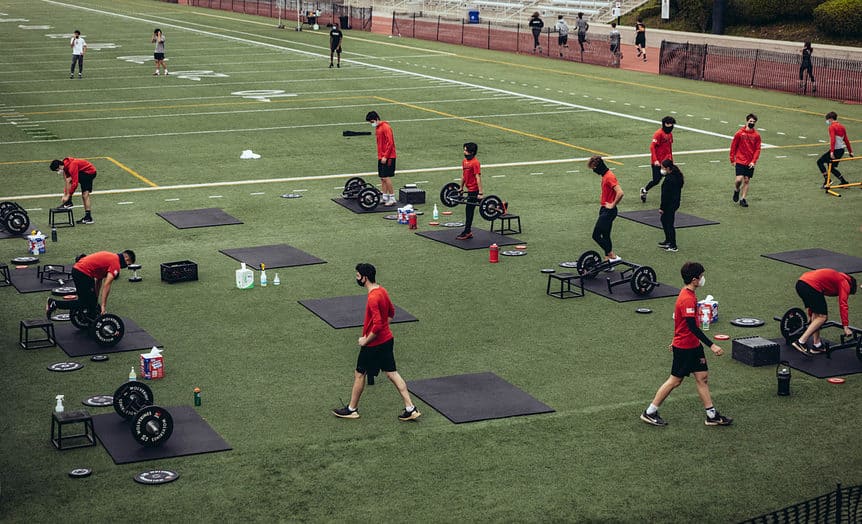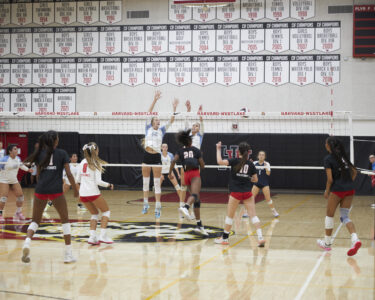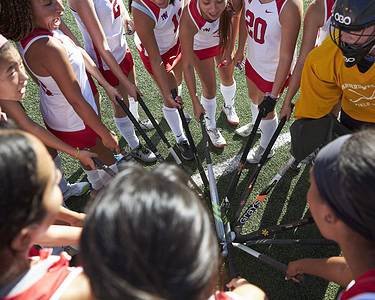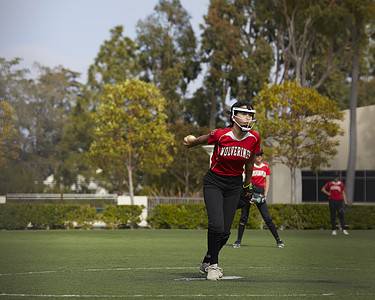By Andrew ’22
Right before entering the locker room in the Marshall Center during my first PE class of seventh grade, I paused, drawn by the scene in the room in front of me. As the current of excited classmates filed into the locker room, I stood staring through the doorway at two athletes, probably freshmen on one of their free periods, working out in the far end of the gym. Their intense silence was only interrupted by the clanging of iron weights and bars. Even witnessing that workout from afar was enough to completely draw me into their focused environment, where the stresses and demands of the school day away melt to allow complete concentration on the small improvements that translate to improved athletic performance.
From this inviting introduction to the sports performance program at Harvard-Westlake, the weight room has been a vital resource to my athletic process, and I strive to use this opportunity to improve as a student-athlete. During seventh and eighth grade, introduction to the basics of stretching, lifting weights, and recovering from workouts is mixed into the rotating PE curriculum. For example, my PE group and I would spend two to three days in the gym learning a new exercise or movement from the sports performance coaching staff. Then, the group would cycle through other activities, such as basketball and track, before returning to the weight room. This structured, class-like environment was initially frustrating since my classmates and I longed for the independent and individually tailored workouts we saw older athletes doing on the other side of the gym. However, this slower pace allowed us to fully master the exercises as young athletes so that we could get the most out of workouts and reduce the risk of injury throughout our careers.
During the ninth grade, athletes begin their sport-specific workouts and come to the gym multiple times a week during free periods for workouts. Coaches supervise the sessions, but they are individually guided and paced. This extra responsibility was initially a difficult transition for me. Consistently going to the gym and giving my full effort even when I felt tired or stressed about an upcoming assessment was challenging; however, this experience allowed me to gain a greater appreciation for the dedication required for athletic (as well as academic and extra-curricular) success.
Once athletes go over the hill to the Upper School campus in tenth grade, they work out during two or three designated times a week with the rest of their team. Each team is under the guidance of a sports-performance coach who writes workouts specifically tailored to athletes’ shifting needs and training schedules. This team-focused environment is my favorite part of the weights program. As a swimmer, I often spend entire practices staring at the black line at the bottom of the pool, barely interacting with teammates between sets. In the weight room, however, every moment feels collaborative, from spotting for a friend to cheering each other on from across the gym. We use a program called Bridge to track our workout performance and seeing each team member’s quantifiable improvement over just a few months is an encouraging reminder of big-picture improvement.
One challenge at the Upper School is that the swim team always trains before school, and I have arrived at countless lifts with groggy eyes and creaky limbs. A short warmup and the adrenaline of working out with friends never fail to get me excited about improving my athletic process, though. And during those mornings, surrounded by the ringing of dumbbells and encouragement of teammates, apprehensions about the coming school day disappear, and I simply enjoy the intense focus and shared pursuit of athletic excellence.







